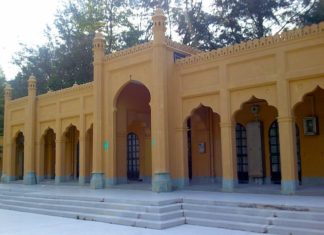Jennifer Lee explores a mosque within a prison
Located inside the grounds of Stanley Prison, Stanley Mosque was the fourth mosque built in Hong Kong. It was originally constructed for the 400 or so Muslim employees from present-day Pakistan and India who worked for the Prison Department during the colonial era. The mosque was built on an east-west axis to face Mecca, Saudi Arabia—the holiest city in Islam and the birthplace of the Prophet Mohammed.
Initially, the Prison Department headquarters were at Arbuthnot Road. Most Muslim staff therefore went to Jamia Mosque on Shelley Street for prayers. However, when the headquarters were relocated from Arbuthnot Road to Stanley Prison, there were calls to set up a new mosque near the prison. Prison authorities provided a piece of land which was used for daily prayers. A mosque was later built on the same land and opened on January 1, 1937.
Over the years, attendance at Friday prayers at the mosque declined from around 150 Muslim staff in the 1970s to just seven families in 1998. The Advisory Board of Antiquities and Monuments Office designated the mosque a Grade 1 historic building on 18 December, 2009.
The sandy coloured mosque contains a prayer hall, veranda (from the Indian word varanda) and courtyard, with a parking area in front. It is of particular note for its incorporation of various architectural styles, including Islamic, Ottoman, Saracenic, Moorish, Byzantine and Chinese.
It is also noteworthy for retaining much of its original appearance, particularly the exterior. The wall opposite the entrance has a niche or recess (called the mihrab) that faces Mecca. It indicates the direction in which the congregation should kneel and pray or prostrate themselves. To the side of the mihrab, there is the minbar or pulpit for the imam, or priest. A purdah screen separates the area reserved for women. Framed passages from the Koran hang on the walls of the prayer-hall.
The mosque is still in operation, mainly serving the Muslim officers of the prison. It is also still of importance to Hong Kong’s Muslim community.
As the mosque is located in within prison grounds, it is not generally open to the public, and visitors are required to gain prior permission. However, the Correctional Services Department permits the use of the Mosque on Fridays or other special occasions by Muslims other than its own staff.
For more information, visit iuhk.org

